The world of jazz can be an intimidating place for beginner musicians. Well, let’s be honest, it can be intimidating for advanced musicians too! Improvisation is an integral part of jazz that sets in apart from other genres but often people think that you fit in one of two camps: “musicians who can improvise”, and “musicians who can’t”. Fortunately though, improvisation is actually a skill that can be learned.
If you are a total beginner to jazz improvisation check out our previous tutorial on getting started improvising jazz for a summary of the basics.
We asked 13 of the top professional jazz musicians and educators:

“What ear training advice would you give to someone just starting out with jazz improvisation?”
These experts have studied and taught at the best music schools. They have written books on jazz, they run the most popular jazz education websites, and they have performed with some of the all-time jazz “greats”.
Read on to discover their insights on why ear training is so important, and which specific ideas, tools and exercises you should use to develop your own jazz improvisation skills.
Overview
- Martan Mann (JazzSkills for Piano)
- Matt Warnock (Matt Warnock Guitar)
- Denis DiBlasio (The Maynard Ferguson Institute of Jazz)
- William Flynn (Wichita State University)
- Mike Lebrun (The Woodshed)
- Chris Cooke (LearnJazzFaster.com)
- Dr. Ed Byrne (Byrne Jazz)
- Mark Meronek (Pianobreaks.com)
- Julian Bradley (Jazz Tutorial)
- Willie Thomas (JazzEveryone.com)
- Marc-Andrew Seguin (JazzGuitarLessons.net)
- Steve Nixon (FreeJazzLessons.com)
- Camden Hughes (Learn Jazz Standards)
- Conclusion
Martan Mann (JazzSkills for Piano)
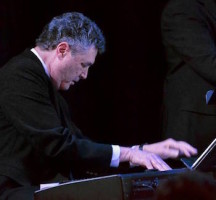
Ear training begins with the ability to recognize and label sounds and emotions. I recommend that you start by training yourself to name intervals. You can do this by thinking of the beginning intervals of various songs in all keys. If you know the names of the interval for each corresponding song, then you can recognize and name them when you recognize hearing the song’s first two notes.
Here’s a useful exercise: play a Dominant Seventh to Major (or Minor) Triad over and over in every inversion and in every key. The V7 to I resolution is the Authentic Cadence in classical training. Play any tones of the chord across the entire keyboard until you can easily recognize the emotion and tension release in any song. This is everywhere in music.
→ Learn more about intervals and chord progressions
Matt Warnock (Matt Warnock Guitar)
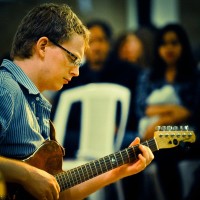
This may seem like a strange answer, but improvising from memory rather than looking at a written chart is the best approach to ear training for beginning jazzers.
When people make mistakes and they’re reading, they look “outside” themselves for the answer, on the page. But if they’re playing from memory they look to their ears, “inside” themselves for the answer.
It may seem like a small thing, but this approach builds a solid foundation between a player’s ears and hands, one they can build upon when they get into transcribing and other advanced ear training exercises.
Denis DiBlasio (Maynard Ferguson Institute of Jazz)
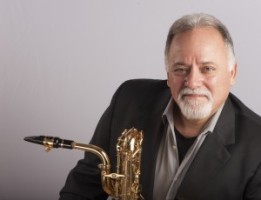 Be able to hear intervals.
Be able to hear intervals.
How do you do that?
Play a simple melody slowly in different keys (or just starting on different notes). This helps the inner ear learn to “take aim” at the next note. This works like a skeet shooter aiming and firing at a flying clay pigeon.
Doing this technique slowly allows the next note to sound internally in the inner ear, becoming the target. Your instrument is the gun that shoots and hits that target. With practice this skill improves until the target can be hit directly almost every time. Many players are really great – and I mean really great – at this!
This is the type of ear training that helps a player survive in the real playing world. If you can recognise intervals and hear a melody you can get to the point where you can easily play that melody in all keys.
→ Learn more about intervals
William Flynn (Wichita State University)
 For anyone new to jazz improvising, I would advise he or she transcribe jazz solos as often as possible.
For anyone new to jazz improvising, I would advise he or she transcribe jazz solos as often as possible.
In the same way that a fluent speaker of German has ears that are familiar with the German language, to be a successful jazz improviser, one must have ears that are familiar with the musical language of jazz.
Jazz musicians gain this aural familiarity through critically listening to solos by great jazz improvisers, slowly figuring out (through trial-and-error) what notes the improviser is playing, and then playing the newly-learned phrases of the solo back while listening to the recording.
This process not only trains the musician’s ears and hands to recognize, recall, and execute authentic-sounding jazz vocabulary, but also teaches the musician how to play that jazz vocabulary.
Much of the magic in a great jazz solo comes not from the notes themselves, but from the ways in which the notes are played. Great jazz improvisers make their solos come to life through the ways in which they articulate their notes, dynamically contour their lines, and (above all) swing their eighth notes!
These are very subtle (yet powerful!) elements of the music that can only be internalized through listening to and mimicking great jazz improvisers.
→ Learn more about transcription
Mike Lebrun (The Woodshed)
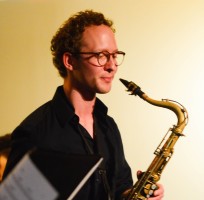 As an improviser, your ear is your most important tool. If you can hear it, and I mean really hear it, chances are you are going to be able to play it.
As an improviser, your ear is your most important tool. If you can hear it, and I mean really hear it, chances are you are going to be able to play it.
Hours and hours of listening to jazz, both actively and passively, will allow you to start hearing the language in a meaningful way, and there’s no substitute or shortcuts here.
If you’re just starting out, the 12-bar blues provides an incredible foundation. It’s the most commonly played chord progression in jazz. When you’re listening to music, try to pick out these blues-based tunes. Once you’re comfortable identifying a blues progression, transcribe (meaning write down and learn to play) a few basic and short blues solos that resonate with you. Sit with your teacher of a seasoned jazz player and analyze the harmonic function of each note and phrase.
Once you understand the basic outline of the blues, you’ll discover there are lots of different ways to play the blues. Listen for the details: are they playing a ii–V going into the IV chord? How are they treating the 6th bar – sticking on the IV, going to the ♭5 diminished, or moving to minor 4 (then dominant flat 7)?
Being able to identify the blues variations instantly by sound is going to do wonders for your harmonic ear, and it will lay the groundwork to hear and play over more complicated tunes down the road.
→ Learn more about the 12-bar blues
Chris Cooke (LearnJazzFaster.com)
Note: Chris shared five excellent tips with us for starting out with jazz improvisation. Here are just two of them, and look out for a full guest post from Chris coming soon with the full set!
 The first and perhaps most important thing for any musician to do is to understand that music is the art form of the ear. Developing your musical ear is your most important priority.
The first and perhaps most important thing for any musician to do is to understand that music is the art form of the ear. Developing your musical ear is your most important priority.
If you’re a beginner improviser, you’re actually in a great place. To “play what you hear” it’s best to start by playing very simple ideas and not getting carried away with your physical or theoretical chops.
Tip 1: Learn the music you love.
Don’t worry about learning every detail from beginning to end. Learn bits and pieces of the music you love by ear from the recording.
Completely internalize these bits and pieces with as much detail as possible until you can hear and play them auto-magically without thinking.
If you’re just starting out, don’t choose Coltrane or Wes Montgomery. Find something that you can actually wrap your ears around. Start with just two notes if that’s what you can hear. But start somewhere and regularly assimilate music that you dig and make it into your own vocabulary.
Tip 2: Follow Your Ear.
Practice letting your ear guide your playing while improvising. This means you’ll have to keep it simple.
You can try playing completely free to experience this: that means no form, no time, no meter, no rules.
Or, you can simplify the context you’re improvising on to experience this: play on just one chord, use just one or two notes, use a preset rhythm, slow it down, play each chord for four bars instead of one, etc.
Do anything it takes to find “the edge of your ability”. That place where it’s challenging – but doable.
Dr. Ed Byrne (Byrne Jazz)
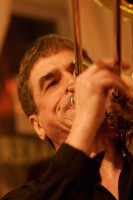
Make yourself aware of the sounds around you by transcribing TV commercials, traffic jams, bird calls, and the cricket symphony in your back yard. Transcribe them in your head with solfeggio, which in a single syllable identifies the hierarchical relationship of each and every note in relation to the Tonic (do) of the key (i.e. its interval).
1. Internalizing Intervals
One method of learning intervals is to concentrate on the sound quality of the interval, the way it rings and resonates—its timbre. Another way is to identify intervals by using famous tunes you know.
Solfeggio is the best tool for internalizing intervals. The beauty of solfeggio is in its naming of the relationship of each and every note within the key—in a single syllable. For example, Te says “Minor seventh of the key”. Sing solos with it too: Start with small phrases, whatever you can handle, and go from there.
Singing will act directly as an adjunct in the service of your instrument, as should also the keyboard. Many believe they are incapable of it, because they haven’t yet done it, or they had a bad vocal music teacher in school—and it does take time to develop these skills. We all, however, must use our voices for tonal memory, learning vocabulary, and ultimately for communicating musical ideas to other musicians.
Practice singing intervals at the keyboard or with the guitar, and carry a pitch pipe with you. Play the intervals up and down throughout the entire range of your instrument. Sing it and it will gradually become internalized. Do this with every interval. After a while you won’t have to calculate at all.
Apply this process to each of the four triad and twelve seventh-chord types; repeatedly sing each chordal arpeggio. Memorize how each sounds in every key. Learn the harmonic clichés in the same manner. Improvise on all of the above. Create 4-measure phrases. Mix all this up until it swings and feels like music.
→ Learn more about intervals and solfeggio
2. Transcribe to learn the language of jazz
If you copy one artist too much you could become a clone, but most of us learn a great deal from this process by drawing from a variety of players.
To get started, memorize Miles Davis’ solos on So What and Someday My Prince Will Come, and Kenny Durham’s solos on Recorda-Me and Blue Bossa – improvisations which are melodic and do not contain too many fast passages.
Learn also to sing their inflections, articulations, and vibratos. You could write them out, but that is more difficult and less to the point with regard to learning vocabulary, since the latter focuses on developing notational skills as well.
Many ideas that you transcribe would never occur to you otherwise. Each phrase learned in this manner can be paraphrased and recomposed and combined in ways that bear your own sonic fingerprint.
Listen to jazz recordings with particular attention to what rhythms are used. In this way you will learn the rhythmic language, and also the particular rhythms found in the tunes you’re working on. Study also recordings of traditional African music, as well as its Brazilian and Cuban relatives.
→ Learn more about transcription
Mark Meronek (Pianobreaks.com)
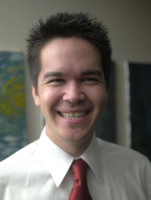 Note: Mark shared several great and detailed insights on jazz improv ear training. Look out for his full answer coming in a followup post soon! For now here’s his perspective and top tip for jazz ear training:
Note: Mark shared several great and detailed insights on jazz improv ear training. Look out for his full answer coming in a followup post soon! For now here’s his perspective and top tip for jazz ear training:
First we should answer the question: why train your ears at all?
To me, learning chords, scales, licks, different chord structures, melodies, and getting better at ear training (a.k.a. learning to listen) are all a means to an end, which is:
To be able to sit, play with nothing on your mind, and enjoy yourself like you only can when you play an improvisation, straight from the heart.
How do you play from the heart? You need to bring the music in your head out through your instrument.
Ear training makes it so that you can hear what comes next in your improvisation in your head and then play it.
My main advice would be: Listen to Your Favorite Solos And Sing Them
Singing solos, in parts or even the entire thing along with the soloist as they play it, is the most powerful thing I know of to improve rhythm, and to learn new licks and soloing ideas at the same time.
The reason it’s so powerful is that when you sing a solo and then play it, you are forced to really internalize the rhythms and the soloing ideas of a professional jazz musician, and you kind of get on the same “wavelength” and feel what that feels like, to be coming from the state of mind that they were coming from. You’ll find yourself asking questions like “Why did he play that there?” and “What’s that rhythm? I’ve got to get a handle on that so I can incorporate it into my own solo!”
You’ll also pick up the accents, the articulations, the swung feel or “groove” that is being played, and all of the ways of expressing emotion that the musician brings along too that are unique to that artist but you can adapt into your own playing.
To make sure you get the benefits of this kind of vocalization though, try to be as precise as you can be, especially with the soloist’s rhythm, and really hit the notes as if you are the soloist soloing as you vocalize along with the track.
The passion that you put into it and the more precision that you sing along to it with will determine how much impact it has for you.
There is nothing I’ve seen that comes close to the power of vocalizing solos from jazz songs, and learning to play the licks or rhythms that you have learned to sing on your instrument along with the original track.
→ Learn more about singing ear training
Julian Bradley (Jazz Tutorial)
 Keep things in perspective: improvisation takes a lot of practice for most people, usually years if not decades to get really good at.
Keep things in perspective: improvisation takes a lot of practice for most people, usually years if not decades to get really good at.
The main difference with jazz music is that for some reason improvisation is expected – or at least seems like it is. Classical musicians aren’t expected to improvise, nor musicians from any other genre.
Remember that the jazz greats who seem to improvise so easily have played each song hundreds of times before any recording was made, they know the chord changes inside out, a lot of what they play they’ve probably played before, and so on. So I like to start by saying that: keep things in perspective, and don’t be too hard on yourself.
With that said, here are my thoughts on how best to practice improv:
1. Learn to walk before trying to run: It took me years to realize this. I used to practice improvising at full tempo, and I’d get nowhere. You have to slow down the piece while you practice, and gradually speed up when ready.
2. Learn the chord changes by heart before playing anything: To give 100% focus to your solo, you have to prepare beforehand. Play through the chord sheet several times until you know the chord changes by heart. This will allow you to give your undivided attention to your solo.
3. Follow your ear: The goal with improv is to transcribe the melody that is already playing in your imagination – and then to play it in real time through your instrument. So the better your ear is, the better your improv will be. A great exercise is to play a solo on your instrument, and to simultaneously sing each note out loud. When you attempt to sing and play the same melody together, you notice how accurate or inaccurate your ear really is.
4. Know which scale to play: I should also mention that some music theory is needed – improvisation is 50% theory and 50% your ear. Many aspiring jazz musicians tell me that they never know which notes to play with any given chord, and it’s essential to understand how to choose a consonant scale to go with any given chord.
Very briefly – a good rule of thumb when choosing which scales to play from is this: build your scale using the chord’s root, 3rd, 5th and 7th. For example, for C minor 7 you’d start with C E♭ G B♭. Then add a whole-step above the root, 3rd and 5th – in this case, you’d get D F A, which means you’d be playing C dorian scale (C D Eb F G A B♭). C dorian sounds consonant played over C minor 7, and this process works for any chord. Often in jazz you’ll change the scale you play from with each new chord. Here’s a detailed video tutorial with more information.
→ Learn more about audiation (hearing music in your head)
Willie Thomas (JazzEveryone.com)
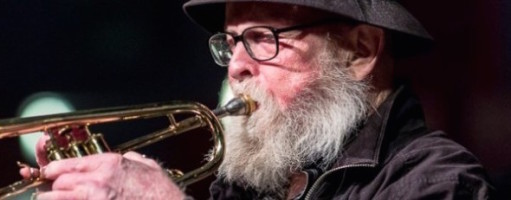 My advice? HEAR IT, FIND IT, PLAY IT!
My advice? HEAR IT, FIND IT, PLAY IT!
As a young 14 year old trumpeter in 1945 with a penchant for playing jazz, my ear was glued to every Charlie Parker, Dizzy Gillespie, Fats, Miles, KD, Bud or any other record I could beg, borrow or steal… and so it has gone for the rest of my 84 years. At that time, nothing was written or published to help a young or old jazz wannabe learn to play. Jamey Abebersold was 6 years old. So for jazz, it was: get it off those records, hope you could find some cats that would let you “try it” at a their gig and then rush back to the turntable for more listening, imitating, memorizing and finger training…
That simple process still plays an essential role today in learning to play jazz.
In the early days, jazz music was traditionally acquired aurally when its early disciples began searching for the right notes to play with the chords they heard in church or the local bistro. Today, most jazz educators call this “ear training”. However, this elusive process is not so much about training your ear as it is about training your fingers to find and play the note you hear – the right ones! That special bebop vocabulary I garnered from those precious records eventually became the genesis of the Aebersold catalogue. My daily routine still starts with playing Cherokee in all keys.
After a lifetime of playing jazz with some of the best talent in the world (Slide Hampton, Freddy Hubbard, George Coleman, Frank Strozier, Bobby Cranshaw, Harold Mabern, and Wynton Kelly to name a few) I have discovered that you can listen to jazz all day long and not get a lot better as a player until you can quickly and automatically find all of those “sweet” notes on your ax and play them with good time in every key… and actually have something musical to say!
Marc-Andrew Seguin (JazzGuitarLessons.net)
 The beginning jazz improviser should focus on real-life applicable skills to help broaden his/her listening abilities in the heat of the moment, while soloing.
The beginning jazz improviser should focus on real-life applicable skills to help broaden his/her listening abilities in the heat of the moment, while soloing.
I come across a lot of students using ear training CDs and exercises, trying to memorize what a major third sounds like, and so on. Although is a good idea, this kind of “academic” ear training skill won’t get you very far at a jam session.
I have two suggestions instead:
First, I recommend that total jazz beginner follow along with solos on jazz recordings. For instance, take a blues solo by Miles Davis (I like Blues by Five a lot) and while listening to the soloist, keep counting the bars as they pass. It takes focus! It’s easy with 12-bar blues, but don’t let the improviser’s ideas throw you off. You have to know exactly where you are in the form of the song at all time. This is a crucial skill for improviser: don’t get lost in the form… especially when you are soloing!
And secondly, I recommend singing classic jazz solos. And that can be considered the first step in the transcription process. Before writing anything down, or even trying to play a classic recorded jazz solo, my advice is: take the time to listen to the solo so often that you can sing it from memory. For instance, on “Blues by Five”, see if you can memorize the first four choruses of Miles’ solo and sing it back. See if you can sing it along (perfectly) with the recording. You might want to use a slow down software, or use the “50% speed feature” in the YouTube player. And then attempt to sing it alone, without the recording.
I believe that these two suggestions will give the beginning improviser the most “bang for his buck”!
→ Learn more about singing ear training
Steve Nixon (FreeJazzLessons.com)
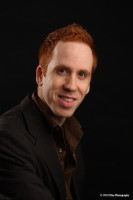 Being able to hear chords and melody is such an important skill. Most beginners over practice technique and under practice ear training. I’ve never had a single gig where they asked me to run up and down scales. But, I’ve had thousands of gigs where I’ve had to respond by ear to the musicians around me.
Being able to hear chords and melody is such an important skill. Most beginners over practice technique and under practice ear training. I’ve never had a single gig where they asked me to run up and down scales. But, I’ve had thousands of gigs where I’ve had to respond by ear to the musicians around me.
So invest time daily into transcribing, learning to hear your intervals, learning to hear chords. The rewards are endless. Plus, this type of practice is fun too!
→ Learn more about intervals and chords
Camden Hughes (Learn Jazz Standards)
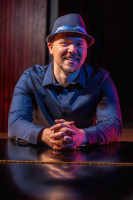 Listen to all the jazz you can. What better way to train your ears than by listening?
Listen to all the jazz you can. What better way to train your ears than by listening?
Do you research and figure out who the “Jazz Greats” were, both in general and on your instrument. You’ll gravitate toward certain artists who become your favorite, and that’s great! When I started listening in junior high I loved Oscar Peterson, liked some Charlie Parker, and I didn’t like John Coltrane. Trane was an acquired taste for me; now I love his music! Just start listening to the jazz you enjoy and your tastes will grow and develop over time. As a jazz educator, one of the biggest responsibilities we have is generating excitement and getting the next generation to listen to this great music!
Figure out who the key figures were and also start checking out the music of the sidemen who played with other great musicians, like all the many cats who played with Miles Davis. Become a jazz historian of sorts and listen like crazy.
Start with some basic names like Louis Armstrong, Duke Ellington, Count Basie, Charlie Parker, Dizzy Gillespie, Thelonious Monk, Art Blakey, Miles Davis, Bill Evans, and John Coltrane and then go from there.
Start copying some of sounds and licks you hear on the recordings. If you want to formalize it into “transcribing” entire solos and learning to play classic solos by ear, then that’s a fantastic way of learning, but not everyone will connect with transcribing like that. That’s okay too, because listening to the music consistently is even more important than transcribing.
Beyond listening and copying/transcribing, learn all of your scales, chords and arpeggios up to the 7ths, 9ths, and beyond. Learn all of your intervals and scales and practice drilling hearing the different intervals, which will help you transcribe if you decide to commit to doing so. Be able to read music but be able to play scales, arpeggios, and intervals from memory. These are the basic building blocks of music. It’s like practicing fundamentals like free throws in basketball!
You should also learn standard tunes and listen to the way the masters play over them. That’s why we’ve built an entire jazz education website around this philosophy of learning tunes!
The main thing is to fall in love with the music and listen obsessively if you want to play this music. The rest will come on its own if you seek out every opportunity to play.
→ Learn more about active listening
Conclusion
So, there it is: your expert guide on how to become the jazz improviser you have always dreamed of being!
A big thank you to all of the experts who took part to share their insights and wisdom on the topic of jazz improvisation ear training.
We hope that this guide has provided you with powerful pointers to the next steps you should take to improve your own jazz improvisation.
Don’t get overwhelmed by the variety of inspiring ideas shared here. The chances are that one or more of the pieces of advice above resonated with you personally – follow that intuition and choose just one concrete next step to continue your journey into jazz.
If you’re not sure what to do next, you can explore the many valuable websites linked to above for more ideas and information, and join a friendly supportive community like Musical U where we can help you set effective goals and create your own perfect training plan.
If there is one running message throughout all the insights above it is: Listen! Trust your ears and explore the jazz you love. Listen carefully and use your instrument (and singing voice) to make sense of the wonderful music you hear and make it your own. Good luck in your jazz improvisation journey!

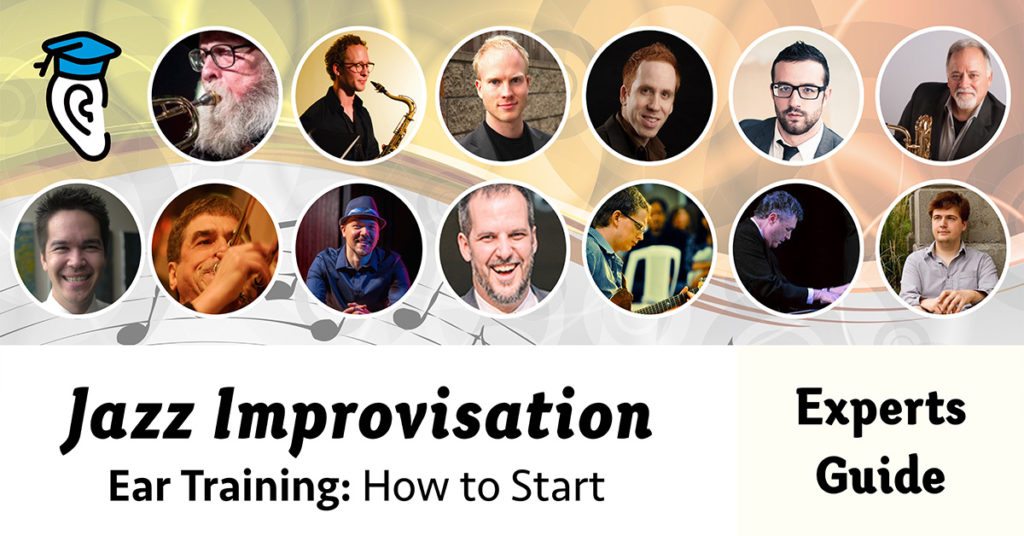
 Click to tweet
Click to tweet




